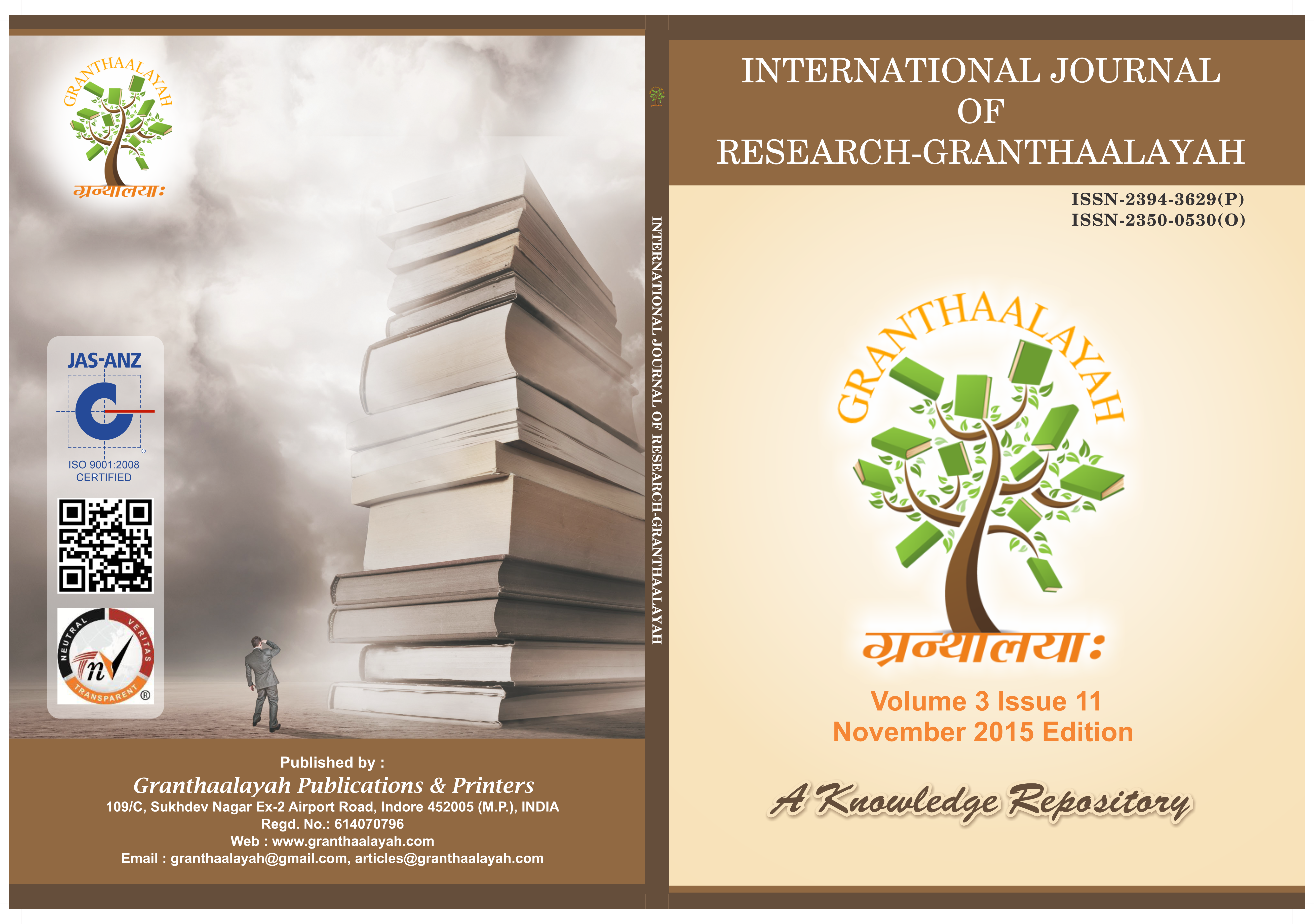ON THE COMPARATIVE ANALYSIS OF THE FAST BLUESTEIN AND FAST COOLEY-TUKEY NUMERICAL ALGORITHMS FOR DIGITAL AND ANALOG SIGNALS PROCESSING
DOI:
https://doi.org/10.29121/granthaalayah.v3.i11.2015.2923Keywords:
Analisis, FFT, Cooley-Tukey, Bluestein, Comparasion, AlgorithmAbstract [English]
This study was designed to compare the computing efficiency of FC-TNADSP and the FBNADSP.to ascertain a faster numerical algorithm necessary for the processing of digital signals. The faster numerical algorithm established in this study is abbreviated with RCFC-TNADSP (Compared Resultant-TNADSP). The methodology adopted in this work was comparative analysis development design. The major technologies used in this work are the FC-TNADSP and FBNADSPwhich were hitherto simulated on the c++ programming technologies. The c++ served as a signal processing language simulator (SPLS). The execution times of the fast Cooley-Tukey and the fast Bluestein algorithms were 1.70 seconds and 1.74 seconds respectively. On comparing the speeds of the fast Cooley–Tukey and the fast Bluestein algorithms we observed that the fast Cooley-Tukey algorithm has 0.04 seconds speed improvement over the fast Bluestein algorithm. In line with this outcome, we concluded that the fast Cooley-Tukey algorithm (FC-TNADSP) is faster than the fast Bluestein algorithm (FBNADSP). In the same vein the fast Cooley-Tukey algorithm (FC-TNADSP algodsp-2) is therefore the fastest DSP algorithm. This is however faster than the spectrum of FFT algorithms of O(nlogn) computing speed, a speed considered to be the fastest hitherto. The result of this study shows we can have faster numerical algorithms other than the traditional spectrum of FFT algorithms of O(nlogn) computing speed. The algorithms were tested on input block of width 1000 units, and above, and can be implemented on input size of 100 000, and 1000 000 000 without the challenge of storage overflow. The input samples tested in this work was the discretized pulse wave form with undulating shape out of which the binary equivalents were extracted. Other forms of signals may also be tested in this fast algorithm provided they are interpreted in the digital wave type. In order to optimized the advantage of the developed algorithms, the frequency index, K should be as defined in this study, that is
Downloads
References
Vladimir, P. andZlatka, N., Georgi, I., Miglen, O., (2011). Complex Digital Signal Processing in Telecommunications: Applications of Digital Signal Processing, Dr. Christian Cuadrado-Laborde (Ed.), 307-406.
Saeed, B. (2003). Interpolation in Digital Signal Processing and Numerical Analysis.New York: Springer-Verlag.
Fraser, D. (1989). Interpolation by the FFT Revisited An Experimental Investigation, IEEE Transactions on Acoustics, Speech, and Signal Processing, (37)5, pp. 665-675.
Matthew, P.D. (2000). Efficient Digital Filters, IEEE Transactions on Acoustics, Speech and Signal Processing, ASSP-
Sanjit, K.M. (2001). Digital Signal Processing: A Computer Approach, McGraw-Hill, New York
Hamming, R. and Kaiser, J. (1977). Sharpening the Response of a Symmetric No recursive Filter by Multiple Use of the Same Filter , ” IEEE Trans. Acoustics, Speech, Signal Proc, ASSP, (25) 5 , pp. 415 – 422 .
Hamming, R. (1998). Digital Filters, 3rd ed. Dover, Mineola , New York , pp. 140 – 145 .
Pedro, F. Z. T. (2009). Algorithms and tools for automatic generations of DSP hardware structures, Edition, Boston: McGraw Hill.pp.18-23, 317-320.
Jianxin, X., Johnson, J.mRebert, Padua, D. (2001). SPL: A Language and Compiler for DSP algorithms.
Auslander, L., Johnson, J., Johnson, R.W (1996). Automatic Implementation of FFT Algorithms, Technical Report DU – MCS – 96 – 01, Department of Mathematicss and Computer Sciences, Drexel University, Philadelphia, PA, Presented at the DARPA ACMP PI Meeting.
Frigo, M. and Johnson, S.G. (1998). FFTW: An Adaptive Software architecture for the FFT. In ICASSP, Vol.3, pp 1381 – 1384 DOI: https://doi.org/10.1109/ICASSP.1998.681704
Frigo, M. (1999). A fast Fourier Transform Complier. In PLDI.
Blesser, B. &Kates, J.M. (1978). Digital processing in audio signals. In A.V. Oppenheim, editor. Applications of Digital Signal Processing, Prentice Hall, Englewood Cliffs NJ.
Cooley James W., and John W. Tukey (1965). An algorithm for the machine calculation of complex fourier series. Mathematics computer. Vol. 19, 1965
Bedekar, P. P., Blade, S. R., & Kale, V. S., (2009). Optimum time coordination of overcurrent relays in distribution system using Big-M ( Penalty) method,” WSEAS Trans. On Power systems. 4(11), pp 341-350.
Al-Hasawi, W. &Gilany, M. (2009). Proposed techniques for identifying open and short circuit sections in distribution networks: WSEAS Trans. on Power Systems,4(12) Pp.372- 381.
An Introduction to the Mathematics of Digital Signal Processing: Part I: Algebra, Trigonometry, and the Most Beautiful Formula in Mathematics Author(s): F. R. Moore Source: Computer Music Journal, Vol. 2, No. 1, (Jul., 1978), pp. 38-47 Published by: The MIT Press Stable DOI: https://doi.org/10.2307/3680137
http://www.jstor.org/stable/3680137 Accessed: 30/07/2012 23:37 your
Good, I.J. “The interaction algorithm and practical fourier analysis”. Journal of the royal statistical society, series B 20 (2): 361 – 372 JSTOR 2983896, 1958. (https://www.jstor.or/state/2983896). Addendum, ibid. 22(2), 375 (1960) DOI: https://doi.org/10.1111/j.2517-6161.1960.tb00384.x
Thomas, L.H. (1963). Using Computers to solve problems in Physics. Applications of Digital computers .Bostom:Ginn
Pavan Kumar K.M., Priya Jain, Ravi Kiran S, Rohith N., Ramamani K. FFT Algorithm: A Survey. The International Journal of Engineering and Sciene (IJES) Volume 2 Issue 4 pages 22-26, 2013 ISSN(e): 2319-1813 ISSN():. FFT Algorithm: A Survey. The International Journal of Engineering and Sciene (IJES) Volume 2 Issue 4 pages 22-26, 2013 ISSN(e): 2319-1813 ISSN():319-1805
Downloads
Published
How to Cite
Issue
Section
License
With the licence CC-BY, authors retain the copyright, allowing anyone to download, reuse, re-print, modify, distribute, and/or copy their contribution. The work must be properly attributed to its author.
It is not necessary to ask for further permission from the author or journal board.
This journal provides immediate open access to its content on the principle that making research freely available to the public supports a greater global exchange of knowledge.






























